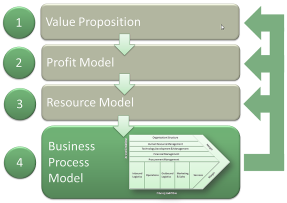
Business Processes are developed to execute the Business Model ensuring a profitable delivery of the Value Proposition that is repeatable and scalable. The Business Process Model is a de-composition of the Value Chain aligned specifically to an organisations business. The
Business’s Value Chain identifies the key value
creating activities or
functions. Value
Chains are a
powerfull
analytical tool for
understanding the
cost structure and
value creation of
Participants in
any Industry. It provides a framework to build integrated end-to-end processes and an understanding of how both core and functional processes interact with each other. It also provides a structured framework for developing metrics used to monitor the businesses performance and for analyzing, and taking action, on the impact that non-performing processes have on the business.
The Value Chain based on Michael Porter’s Model divides the Process into two categories:
- Primary Activities
- Support Activities
The Value Chain disaggregates the business entity, identifies strategic activities and supports analysis of business economics and cost behavior and helps identify potential sources of differentiation. Each functional area in the Value Chain is decomposed; identifying structural and executional costs that support’s cost modeling and unit cost analysis. From the function decomposition of the key activities, detailed processes are developed and integrated within the Business Model.
Note: The term ‘Value Chain’ was used by Michael Porter in his book "Competitive Advantage: Creating and Sustaining superior Performance" (1985).




No comments:
Post a Comment